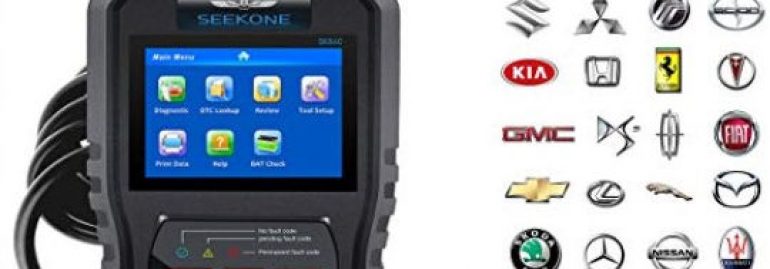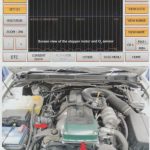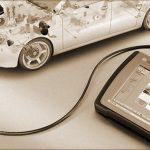
There are several common Ford fault codes and their meanings. These are P0607, P2110, P0782, and P007F. If you are unsure of which one you’re experiencing, keep reading! Learn the differences between these fault codes and how to fix them. Once you have figured out the problem, you’ll be well on your way to fixing your car. This article will cover all of them.
P0607
If your car displays the P0607 trouble code, you should take your vehicle to a mechanic to fix it. Typically, this trouble code is associated with an engine issue. When it displays, you’ll notice problems with your engine, including stalling and misfiring. Additionally, fuel economy and the smoothness of your driving may be affected. Fortunately, fixing this error code is easier than you might think. Here are some steps to follow.
The most common cause of the P0607 Ford fault code is a faulty battery cable or alternator, and related components within the vehicle’s wiring system. If you’re looking to replace these parts yourself, make sure you purchase OEM units from the manufacturer. Aftermarket parts are often not made to OEM specifications, and can cause problems. A replacement Control Module may be necessary to fix the P0607 code. However, this method is not always a sure fix, and it could also be costly.
When you suspect a PCM malfunction, check your vehicle’s owners manual. Technical Service Bulletins are documents covering problems and solutions for specific Ford vehicles. A corroded battery terminal can cause a voltage fluctuation and eventually cause the PCM to malfunction. For this reason, the best solution is to visit a professional. If this still doesn’t work, try looking at the other options listed above. The Ford F250 owners manual lists all the options that they have for fixing the problem.
A new engine control module will contain software specifically designed for your vehicle. The P0607 code indicates a performance problem with the powertrain control module. Your vehicle will have a Malfunction Indicator Lamp (or CheckEngine Light) if you notice the error P0607.
P2110
If your vehicle is giving you intermittent or slow acceleration, you may have P2110 Ford fault codes. This code is stored in the ECM memory, and its symptoms can range from slow throttle response to limited RPM. A mechanic should first check the other fault codes, such as P2110, before addressing this one. Otherwise, it could be a symptom of something more serious. Listed below are some of the symptoms of P2110 and how to repair it.
The causes of this code vary, but it usually relates to one of two areas. If the ECU or throttle body is faulty, it is causing the P2110 code. If this is the case, your car may need a new throttle body or a new ignition coil. The latter will cost around $90 to fix. A technician will charge you an average of $75-150 per hour, and a thorough diagnosis can take anywhere from 30 minutes to an hour.
A PCM or engine control module (ECM) is responsible for determining which of the two parts of the vehicle are faulty. The sensor on the accelerator pedal sends a signal to the engine control module (PCM) to tell it to open the throttle valve. When an ETCS fault is detected, the PCM sends the P2110 error code. The PCM then pushes the engine into limp home mode, reducing available power.
If the P2110 Ford error code is a sign of a problem with the throttle actuator, it is important to consult your vehicle’s manual. You can also refer to the Technical Service Bulletins (TSB) for information on a given part. Moreover, you should perform a PCM scan on your vehicle to discover other possible malfunctions. So, take note: replacing the throttle actuator may fix the problem, but be careful.
P0782
If you’re experiencing trouble shifting, you might have the trouble code P0782, which is associated with your vehicle’s transmission. The problem can arise due to a blockage or faulty solenoid. A fault in the PCM or Transmission Control Unit could also cause the code to appear. Symptoms of P0782 can range from no signs to transmission failure, poor fuel efficiency, and overheating. In some cases, transmission repair may be necessary, as well as a torque converter replacement or rebuilding.
To identify the cause of P0782, start by checking the transmission fluid temperature. Some vehicles have a strategy that delays shifts when the Transmission Fluid Temperature (TFT) is below 21degC. This is done to speed up the heater’s warm-up time. The transmission may also be delayed, especially the 2-3 shift. To identify the cause, you can use a diagnostic tool, which looks like an oversized calculator. It communicates with the car’s computer and reports the problem in terms of codes.
When the transmission is mismatched in gear ratio, code P0782 will be stored and a check engine warning light will not illuminate. A bright red transmission fluid is healthy, but a P0782 code may occur even with a warning light illuminating. Other possible causes of P0782 are damaged or open wiring and corroded connectors. For more information, read the following troubleshooting guide.
Transmission failure is another cause of P0782. A faulty PCM can lead to fuel efficiency issues, cambio problems, and transmission overheating. All of these symptoms indicate that a problem with the transmission control module is causing P0782. To repair the transmission, your mechanic will need to disassemble the transmission and replace the solenoid or paquetes of the cambio. If you’re still experiencing the problem, you may need to replace the transmission.
P007F
P007F is a generic powertrain diagnostic trouble code applied to a variety of OBD-II vehicles. This error code is indicative of a mismatched signal between CAT sensors. Bank 1 is the engine group that contains cylinder number one. This problem is most common in vehicles that have forced air intake systems such as superchargers or turbochargers. If you notice this fault code on your vehicle, the first step in diagnosing it is to check if the intercooler is obstructed and the CAT sensor wiring is tangled. If this is not the problem, the next step is to visually inspect the wiring. Sometimes, the PCM needs to be updated to optimize the performance of the engine.
Spark plugs may be the source of this problem. Improperly connected, dirty, or fogged spark plugs can cause engine trouble. Make sure that they’re replaced each season, or at least every 25 hours of driving. Check the gap of the spark plugs as well, as it’s critical for the proper spark. The ignition system can also be at fault, including a faulty spark plug lead or a shorted kill switch.
Transmission output shaft speed controllers are another common cause of this Ford error code. The problem may also be caused by a dirty regulator. If the engine is equipped with an automatic transmission, the transmission output shaft speed controller may be malfunctioning. Other causes for the error code include contact closure or wiring. If you’ve tried everything to fix it yourself, you’ll probably end up with a P007F Ford fault code.
P014F
The primary driver symptom of the P014F ford fault code is an illuminated MIL (Malfunction Indicator Lamp), which indicates a malfunctioning oxygen sensor. The “Check engine” light will also illuminate if this error is present. Despite being a relatively minor issue, neglect of the problem could lead to further consequences. For example, the O2 sensor could be defective or its electrical circuit could be damaged. In addition, the voltage fluctuation from the O2 sensor may be slower than expected.
There are two primary types of repair for the P014F ford fault code. The first is a simple fix. Changing the fuel filter can resolve the P014F. The second type of repair is a more involved process. Replacing the PCM may be necessary if the vehicle does not respond to normal fuel delivery. Ultimately, you should pay a mechanic to diagnose your vehicle’s fault codes.
This code will usually be caused by a malfunctioning O2 sensor. The O2 sensor provides fuel control feedback, and when it is malfunctioning, the ECM will not react as expected. This can cause a vehicle to stay in an open loop until the problem is fixed. However, there are several solutions to this problem. You can try one or several of them, depending on the severity of the problem. If none of these work, you may need to contact a repair shop for assistance.
The next step is to take your vehicle to a certified mechanic. Your mechanic will diagnose the problem and repair it if necessary. P014F Ford fault codes






